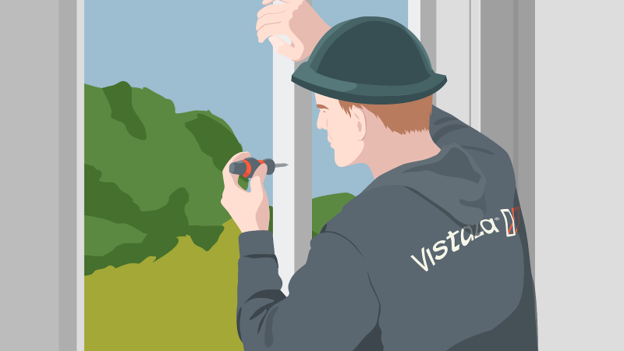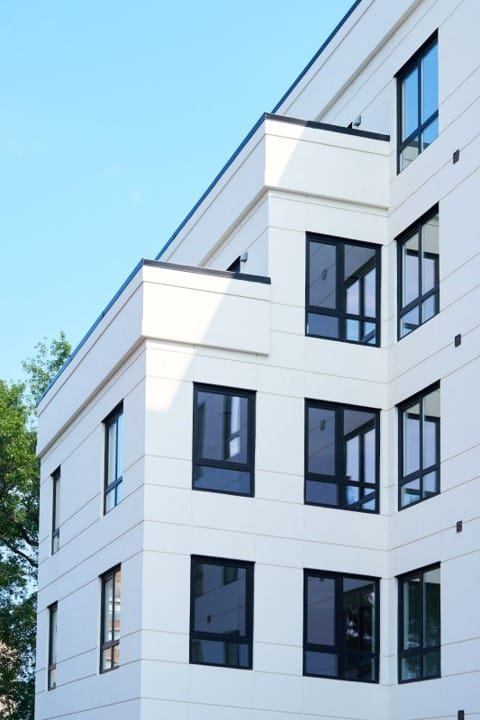Gas filled windows have become a popular choice for homeowners looking to increase the energy efficiency of their homes. By upgrading to double- or triple-paned windows and filling the space between the panes with insulating gasses like argon or krypton, homeowners can enjoy improved insulation and reduced energy costs.

In the following article, we will explore the benefits of gas filled windows, the types of gas fills available, and how they can be a cost-effective solution for improving home energy efficiency.
Why Are Windows Filled with Gas?
Windows play a crucial role in a home’s energy efficiency. According to the U.S. Department of Energy, heat gain and loss through windows can account for up to 50% of a home’s heating and cooling needs.

Traditional windows with only a single pane of glass offer limited insulation, allowing heat to easily transfer in and out of the home. Gas filled windows, on the other hand, provide an additional layer of insulation that helps to reduce heat transfer and improve energy efficiency.
Types of Window Gas Fills

Argon
Argon gas is the most commonly used gas fill in windows. It is a non-toxic, clear, and odorless gas that is readily available and inexpensive. Argon has a thermal conductivity approximately 67% lower than that of regular air, making it an effective insulator. When filled between the panes of a window, argon gas reduces heat transfer, improves insulation, and helps to minimize condensation on the window surface. Argon gas is often used in double-paned and or triple-paned windows with larger gaps between the panes.
Krypton
Krypton gas is another popular choice for gas filled windows, especially in triple-paned windows with narrower gaps between the panes. It shares many qualities with argon gas but offers even better insulation properties. Krypton has a lower thermal conductivity than argon, resulting in enhanced energy efficiency. However, krypton gas is more expensive to produce than argon, making it a less cost-effective option for larger window gaps. Some window manufacturers may use a combination of krypton and argon gasses to strike a balance between performance and cost.
Which is better?
The choice between argon and krypton gas fills depends on various factors, including the size of the window gaps, the desired level of insulation, and the budget. Argon gas is a more cost-effective option for larger gaps, while krypton gas is better suited for narrower gaps in triple-paned windows. Both gasses provide significant improvements in energy efficiency compared to traditional single-paned windows.
Benefits of Gas Filled Windows

Gas filled windows offer several benefits that make them an attractive option for homeowners looking to improve energy efficiency:
- Improved insulation: The introduction of insulating gasses like argon or krypton between the panes of a window reduces heat transfer and improves insulation, keeping the interior of the home more comfortable.
- Energy savings: By reducing heat gain and loss through windows, gas filled windows can help lower energy consumption and reduce heating and cooling costs.
- Reduced condensation: Gas filled windows help to minimize condensation on the window surface by maintaining a more consistent temperature inside the window unit.
- Sound insulation: The use of gas fills in windows can also help to block external noise, creating a quieter and more peaceful indoor environment.
- Longevity: Gas filled windows are designed to last for many years without any significant performance losses. Even with a gradual gas leakage of up to 1% per year, the windows can remain effective for at least two decades.
Gas glass window replacements
Over time, gas filled glass in the windows may experience some degree of gas leakage, which can affect their overall performance. However, even with a slight loss of gas, the windows can still provide adequate insulation. The National Glass Association states that as long as at least 80% of the gas remains, the window will maintain its properties and effectiveness. Even at the maximum leakage rate, it will take at least 20 years till it needs a refill.

If the gas leakage is significant and the window’s thermal barrier is compromised, it may be necessary to consider window glass replacement. Signs of gas leakage include condensation or fog inside the window unit, indicating that the gas fill has escaped and been replaced with moisture-laden air. If such issues arise, homeowners should contact the manufacturer or installer for further assistance.
It’s important to note that gas fills, such as argon or krypton, pose no health hazards to the occupants of a home. These gasses are non-toxic and inert, ensuring the safety and well-being of the homeowners.
How Vistaza can help
If you’re considering installing gas-filled windows in a new or existing development, Vistaza is here to assist you. Our team of experts can provide guidance on the best window options for your building and help you choose the right gas fill based on your needs and budget. With our extensive selection of high-quality windows and professional installation services, we can help you maximize the energy efficiency of your building with no compromise to beauty and value.
Contact Vistaza today to learn more about the benefits of gas-filled windows and how we can transform homes into a more energy-efficient and comfortable space.




